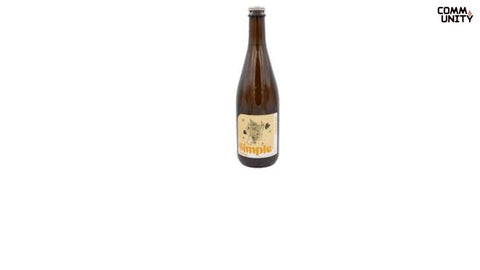Wine has played a special part in human life for thousands of years, if not even longer. From early winemaking that used clay pots and natural fermentation to the technological advancements employed by wineries today, the story of winemaking and styles of wine we produce has evolved over a long period of time.
So, if you’re wondering when wine was invented, how it became one of the world’s favorite drinks, or about the history of wine in general, keep reading to learn more.
When Was Wine Invented?
The oldest known example we have found is from around 6000 BCE, in the country of Armenia. Based on grape seeds and wine-stained pottery we can deduce that they were producing something similar to what we call wine today.
What is sure is that all the earliest signs of wine-making all come from the fertile crescent, places like Georgia, Iran and Armenia. The most intact ancient winery thus far was found in Crete and dates back to 1580 BCE.
These ancient wineries looked very different from what you may picture as a winery in 2025. These historic wineries made wine by fermenting local grapes in clay vases, using gravity to feed the fermenters. Early wine was simple from an intervention perspective. People crushed wild grapes and left the juice to sit and turn into wine through natural fermentation.
Wine in Ancient Egypt and Mesopotamia
In ancient Egypt, wine was made for the rich and powerful. Red and white wines were flavored with honey, herbs, and spices. Clay jars with special seals told the wine’s origin and vintage. These jars were not only used in winemaking but also for storage.
In Mesopotamia, wine was traded along river routes. Beer was common for everyday people, but wine was served at royal tables. Artwork from this time shows grape harvesting, crushing, and drinking.
Wine was not just a drink, but an important part of art, religion, and culture. These early uses shaped how future civilizations saw wine.
The Role of Greeks and Romans in Wine History
The Greeks helped spread wine across the Mediterranean. They planted vineyards, built wine presses, and studied the growing process. Wine was seen as a symbol of thought, friendship, and joy.
The Greek god of wine, Dionysus represented wine, festivals, ritual madness and rebirth. People held events to celebrate wine with songs, food, and dancing.
The Romans continued the Greek traditions and took wine even further. They brought grapevines to all parts of the Roman Empire, including France, Spain, and Germany.
The Romans improved how wine was stored. They used oak barrels and glass alongside the amphorae, and they wrote books about wine-growing. The same wine methods are still being widely followed across the world.
Wine in the Middle Ages
After the fall of Rome, wine-making slowed. But it did not disappear. Christian monks became the new caretakers of vineyards across Europe who preserved winemaking techniques and advanced viticulture (culture and harvesting of grapes).
Monks made wine in monasteries, keeping written records and testing new ways to improve the process. Many famous wine regions today like Burgundy and Champagne owe their start to the work of these monks.
Wine was safer to drink than water during periods of this time as water often carried diseases, but in wine the alcohol content killed dangerous bacteria. That made wine part of everyday meals for many people, even the poor.
Wine Travels to the New World
In the 1500s, Spanish explorers brought grapevines to the Americas establishing vineyards in California, Mexico, Chile, and Argentina over time.
These new wine regions began to grow fast. The warm climate, good soil, and openness to new ideas helped winemakers produce high-quality wine outside of Europe.
Places like Napa Valley, Mendoza, and even far flung places like Australia’s Barossa Valley are now some of the top wine regions in the world.
The Phylloxera Epidemic
In the 1800s, European vineyards were facing a disaster. A tiny insect called phylloxera attacked grapevine roots and spread quickly. Vineyards in France, Italy, and beyond were destroyed.
Grape growers discovered that American vines were immune to phylloxera. To overcome this crisis, they began grafting European grape varieties onto American rootstocks. This method taught the industry much about diseases that can harm grape vines and saved Europe’s wine industry. The push after this set off an explosion of innovation in viticulture.
Wine in the Modern Era
Today, with France, Italy, and Spain being top producers, the United States, Chile, South Africa, and Australia have become global leaders as well.
Modern winemakers use science and technology to improve wine quality. Still, many practices remain as a throughline from ancient winemaking to today: grapes are handpicked (at least by thoughtful producers), barrels are used for aging, and wine lovers enjoy bottles the same way they did centuries ago.
During the 1960s to 2000s there was a push towards industrialization in the wine world. Since the mid 2000s, there has been a shift back towards natural winemaking as farming has become reprioritized. This has allowed more artisanal producers to gain a larger share of the market.

Domaine de l'Horizon Cotes Catalanes Blanc 2021
Wine is now available in nearly every country. Supermarkets, wine bars, and tasting rooms make it easy for people to explore different types and regions.
The modern winemaking process today generally involves harvesting, crushing and pressing, fermentation, clarification, and aging, and finally, bottling.
While the basic steps are consistent, different winemakers can tailor the process through different techniques and technologies.
Timeline of Wine History
|
Time Period |
Event |
|
6000 BCE |
First signs of wine in Georgia and Iran, wine invention |
|
4100 BCE |
Oldest winery found in Armenia |
|
3000 BCE |
Wine used in Egypt and Mesopotamia |
|
1000 BCE |
Greeks spread vineyards around the Mediterranean |
|
200 BCE |
Romans develop wine tools and spread vines |
|
500 CE |
Monks make wine during the Middle Ages |
|
1500s |
Wine reaches the Americas |
|
1860s |
Phylloxera insect destroys European vineyards |
|
1880s |
Replanting began post crisis |
|
1890s |
Wine production was almost back to normal |
|
1900s–Present |
Wine made on almost every continent |
Why Wine History Still Matters
Wine is more than a drink. It connects groups of people across time and place. Learning about wine history shows how grapes became one of the world’s most valuable crops.
Each bottle of wine has a story that includes farmers, artists, explorers, and scientists. Wine history reflects human growth, trade, faith, and creativity.
Whether you're enjoying a glass at dinner or visiting a vineyard, you’re taking part in a tradition thousands of years old.
Final Thoughts
The question "when was wine invented" leads to a deeper understanding of how important wine has been throughout history. From clay pots in ancient Georgia to bottles on modern shelves, wine has traveled far and changed with each step.
Wine history teaches us that great things take time. The simple grape has touched nearly every part of the world, shaping cultures and bringing people together.
So, from now on, every time you pour a glass, make sure to remember that there’s a piece of the long, rich story behind it!
No matter the type of wine that you prefer, Community Wine and Spirits offers a wide range of high-quality wines. Take your pick and create memories!


